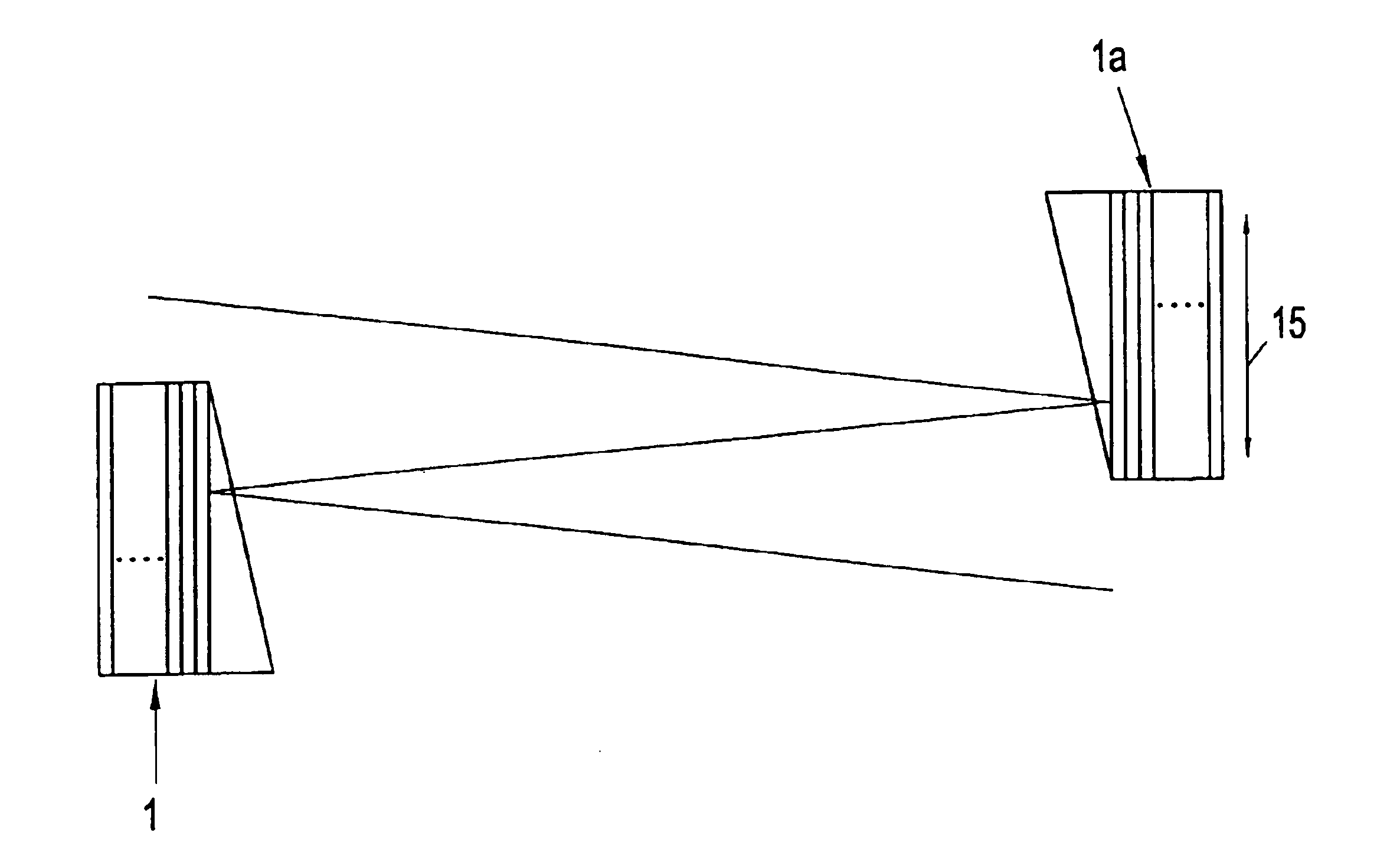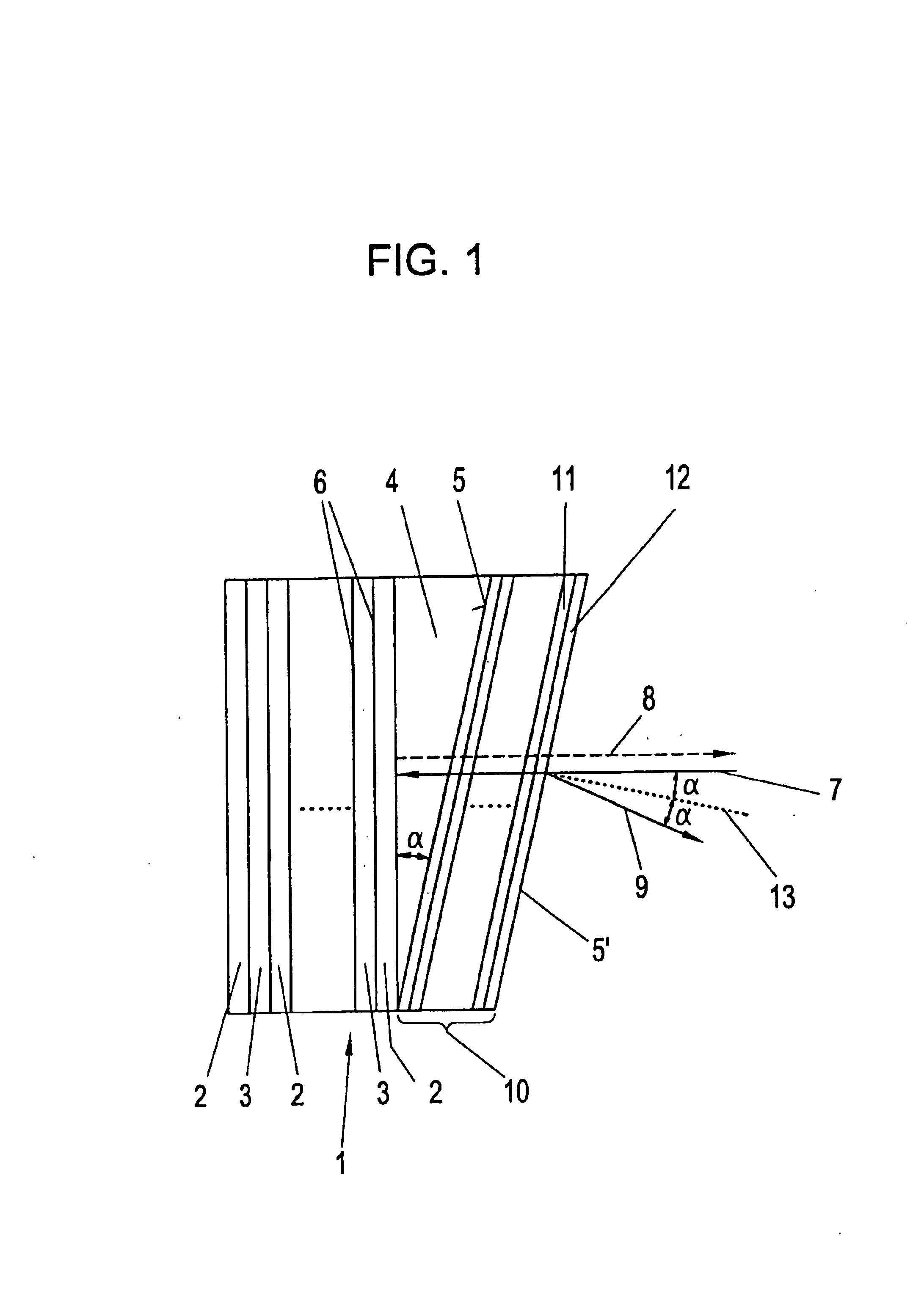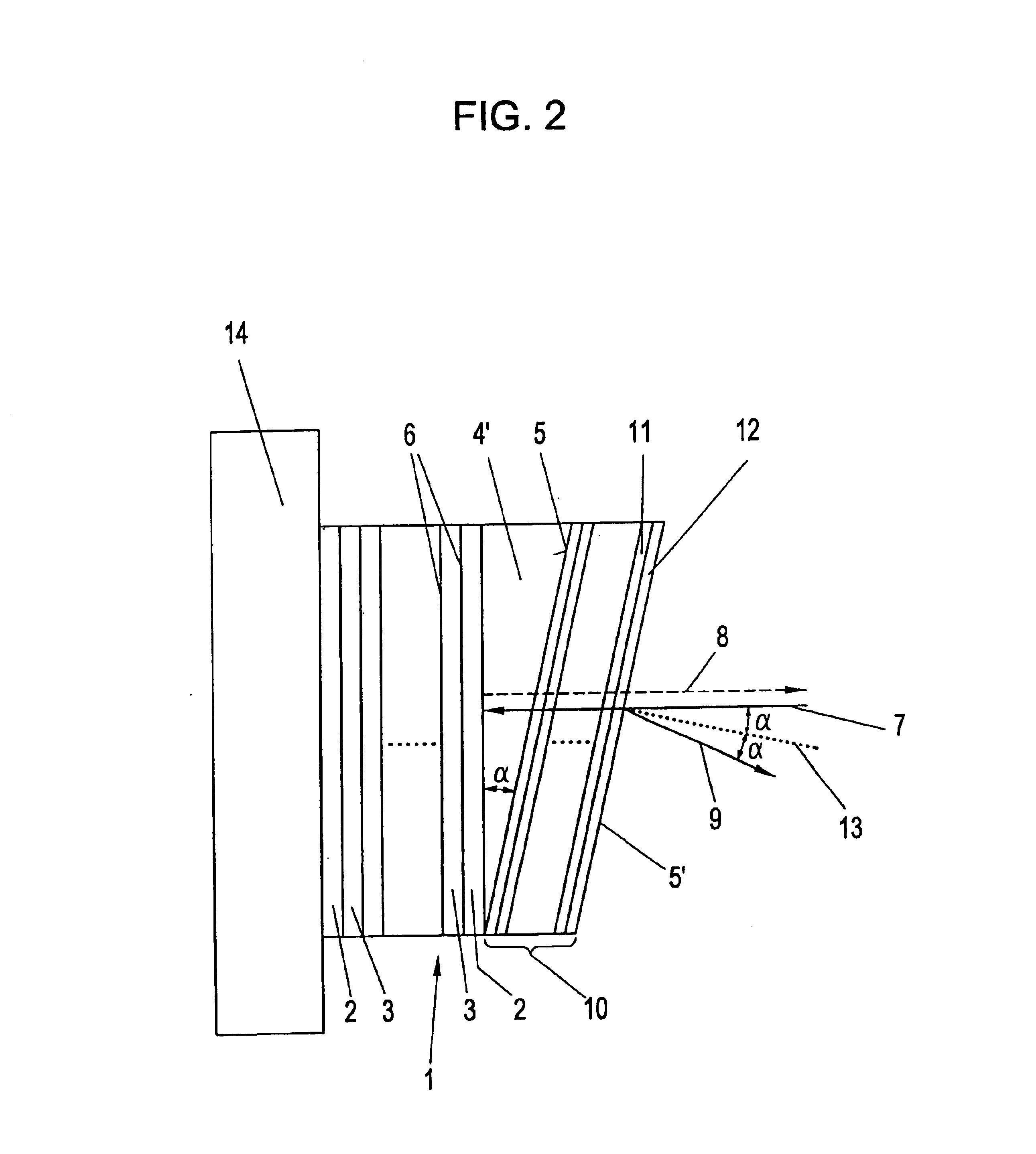Multilayer mirror
- Summary
- Abstract
- Description
- Claims
- Application Information
AI Technical Summary
Benefits of technology
Problems solved by technology
Method used
Image
Examples
Embodiment Construction
In FIG. 1, a multilayer dispersive mirror 1 is schematically illustrated which, e.g., is assembled of individual layers 2 having a relatively low refraction index and individual layers 3 of relatively high refraction index. These individual layers 2, 3 are alternatingly arranged, a total of e.g. 30 individual layers 2, 3 or more possibly being provided. These individual layers 2, 3 are applied to the rear side of a wedge-shaped thin transparent substrate 4, in particular a glass substrate, in a per se conventional manner, e.g. by vapour deposition. As is visible, substrate 4 is wedge-shaped, i.e. its thickness changes linearly from one side of minimum thickness towards the other, opposite side of maximum thickness so that in this manner a front face 5 is obtained which, compared to the interfaces 6 between the individual layers 2, 3, extends inclined under an angle α.
A beam 7, in particular a laser beam, arriving at the front face 5 will penetrate through substrate 4 and, depending ...
PUM
| Property | Measurement | Unit |
|---|---|---|
| Thickness | aaaaa | aaaaa |
| Thickness | aaaaa | aaaaa |
| Thickness | aaaaa | aaaaa |
Abstract
Description
Claims
Application Information
 Login to View More
Login to View More - R&D
- Intellectual Property
- Life Sciences
- Materials
- Tech Scout
- Unparalleled Data Quality
- Higher Quality Content
- 60% Fewer Hallucinations
Browse by: Latest US Patents, China's latest patents, Technical Efficacy Thesaurus, Application Domain, Technology Topic, Popular Technical Reports.
© 2025 PatSnap. All rights reserved.Legal|Privacy policy|Modern Slavery Act Transparency Statement|Sitemap|About US| Contact US: help@patsnap.com



